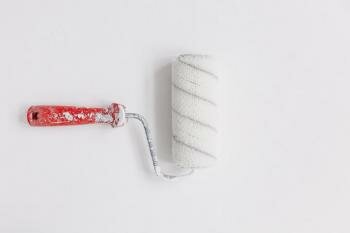Community of Practice Discusses Adoption of Limits, Laws on Lead in Paint
By IISD’s SDG Knowledge Hub , September 25, 2020
The Strategic Approach to International Chemicals Management’s (SAICM) Lead in Paint Community of Practice (CoP) held two online discussions on the adoption of lead paint laws and on setting limits for lead in paint.
The first discussion, on 9 July 2020, focused on Steps toward adoption of national lead paint laws and was moderated by Angela Bandemehr, US Environmental Protection Agency (EPA).
Participants addressed opportunities and challenges faced by countries as they develop and adopt lead paint laws. They considered the ways in which countries can engage with stakeholders, address the technical and regulatory mechanism of drafting a law, and raise public awareness on the health hazards of lead in paint. Opportunities included having existing related laws that would avoid creating a new regulatory framework. Challenges included difficulties in enforcing existing laws and gaining multi-stakeholder support.
Participants also discussed accomplishments, lessons learned, and advice for other countries implementing lead paint laws. They said the Global Alliance to Eliminate Lead Paint (Lead Paint Alliance) has helped promote lead paint legislation and that such efforts should continue and be enhanced. The Alliance produced a Factsheet that outlines steps that have helped countries adopt lead paint laws.
As of June 2020, 75 countries had passed lead paint laws. The SAICM Global Environment Facility (GEF) project on Emerging Policy issues is also working with governments to support the development of laws and with small and medium enterprises (SMEs) to promote the phase-out of lead paint additives. The discussion underscored that lead paint provides an example of promoting guidance on minimum standards related to specific chemicals to help under-resourced countries and could be used as a model for other sectors.
The second discussion, on 18 August 2020, addressed Setting low limits for lead in paint, focusing on legal aspects. It was presented by Desiree Narvaez, UN Environment Programme (UNEP) and SAICM GEF Project Coordinator, Steve Wolfson, US EPA, and Amanda Rawls, American Bar Association’s Rule of Law Initiative.
The discussion emphasized the importance of legally binding limits on lead in paint, and addressed ways to establish low lead paint limits. UNEP’s Model Law and Guidance for Regulating Lead Paint provides sample legal text for a 90 ppm limit, the lowest technically feasible limit to date, for domestically manufactured and imported paint containing lead.
Participants shared actions countries are taking to transition to a specific mandatory legal limit for lead in paint. A number of countries have demonstrated success in establishing limits, while others are still in the process of establishing limits or have yet to begin the process. Participants expressed concern that achieving a 90 ppm limit for industrial, marine and vehicle paints might require different phase-out periods and timeframes than household paints.
They stressed that compliance or enforcement provisions can help ensure the 90 ppm limit is adhered to. They reviewed existing mechanisms and provisions, including certification of paints, prohibition of lead-containing additives, fines, testing requirements, and random trade inspections. Participants agreed that awareness raising can help facilitate compliance.
The Model Law suggests that the primary responsibility for testing falls on the manufacturer to document that the paint meets at 90 ppm limit, but that the government also has the authority to test paint. On options to verify that paint meets a specific legal limit, participants mentioned: independent lab testing paid for by manufacturers; government conducting spot testing at a facility or in store; and manufacturer providing documentation that paint meets the limit, upon request.
Representatives of governments, NGOs (civil society, academia, the private sector) and intergovernmental organizations (IGOs) participated in the discussions, including from Australia, Bangladesh, Benin, Cameroon, Colombia, Iran, Israel, Jamaica, Democratic Republic of Congo, Ecuador, Ethiopia, Malaysia, Mexico, Peru, the Philippines, Senegal, Serbia, South Africa, Sudan, Suriname, Zambia, UNEP, International Pollutants Elimination Network (IPEN) and the World Health Organization (WHO).
The SAICM Secretariat and the University of Cape Town (UCT) organized the discussions. The Lead in Paint CoP aims to foster online discussions among all relevant stakeholders on issues related to lead in paint. [Lead Paint Reformulation Technical Guidelines] [Lead Paint Alliance FAQs] [WHO Guidance on Lead Paint Testing]


